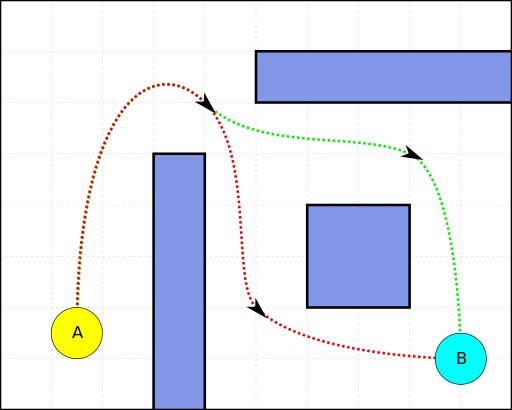
When we’re in the heat of creation, in the final hours before a deadline, or when we’re trying to prove ourselves, failure can be a punch in the gut. As creatives, we try to minimize failure, or we at least attempt to mitigate its emotional and practical effects. But what about all those times something unexpected happened, and it gave us the insight and inspiration necessary to go a different direction?
Signposts
While developing the music system for Mini Metro, Rich Vreeland did the “wrong” thing first. “We were exploring every idea for the music,” he recalls. “The game had train cars that would fill with some number of people, and I thought it would be cool if the people were steps in a sequencer.” He tried a number of methods for sequencing music using the people in the cars, and landed on something that sounded good. But while play testing the system he realized, “it was cool, but it directed way too much attention to a gameplay element that wasn’t really important in the game.”
When we meet failure, our first impulse may be to scrap the work and move on. And sometimes that’s a good idea. But throwing out work doesn’t mean you really lose the progress–you always get to keep what you learned.

Earlier in his career, Viktor Phoenix, “started a print magazine in Chicago, and there was enough interest in it for it to become almost a full-time job.” Meanwhile, he was working another full-time job as a web designer at an ad agency. “Between both things, I was working a lot of hours.” He remembers a growing amount of pressure while trying to manage the workload, “I was nearing breakdown. There was this feeling of imminent collapse. I needed a change.”
Dodge and Roll
Hitting failure can be a trigger to stop trying, but it’s also an opportunity to get creative. What do we have here that we can work with?

Now that Rich was thinking about sequencing based on the game’s visual elements, and now that he knew the stations and the trains needed more emphasis, he had a new idea. “The stations and their passengers have shapes that pair together to describe their relationship, so I decided to pair a unique sonic component to represent each of those relationships. The passenger getting to its desired station is the most important aspect of the game, so I emphasized this relationship while de-emphasizing the trains.” This approach ultimately resulted in the final music system for Mini Metro, and probably wouldn’t have come to mind without first trying and throwing out the other system.
Rather than crumple under the pressure of his situation, Viktor shook things up by leaving it all behind and moving to Los Angeles. “I was always interested in sound and music, and once I moved, that hobby eventually transformed into audio work at Sammy Studios.” Approaching his work with new vigor, he dove into the interactive audio world. Without his previous experience driving him to make a change, he might not have encountered the opportunities or had the cognitive switch necessary to end up where he is.
Always Open
So then if we can treat failures as signposts for new directions, how can we make sure we’re on the lookout for them? And what are some good ways to keep from getting discouraged so we can take advantage of those opportunities?
“Each path is unique,” Viktor advises not to discount options that weren’t in your plan, and to make sure you’re in the right headspace, “Listen to your body. It will tell you when something’s not right.”
In order to keep yourself open to discovery, Rich suggests, “feature creep is something that is often reviled in game development, but feature creep is what allowed me to reach a lot of unorthodox conclusions about how to implement the sound in Mini Metro.”
There’s a whole scary, exhilarating, weird, and wonderful world of failure and success out there. And maybe they’re not so different after all. Maybe failure is just the first step toward success. If so, let’s try to have a little fun with it.